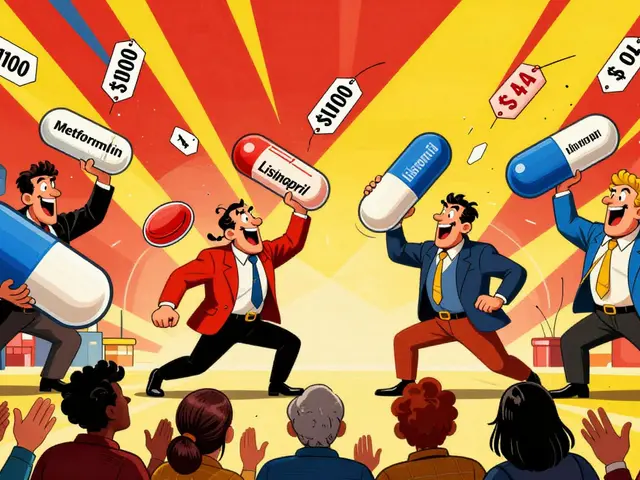Prescription Drug Prices – Your Quick Guide
Ever stared at a pharmacy bill and wondered why that same pill costs $20 in one place and $120 in another? You’re not alone. Prescription drug prices are confusing, but they don’t have to be a mystery. Below you’ll find the main reasons prices jump around and easy ways to keep your out‑of‑pocket cost down.
Why Prices Differ So Much
First off, manufacturers set the list price, also called the wholesale acquisition cost (WAC). That number is a starting point; insurers, pharmacies, and pharmacy benefit managers (PBMs) all add their own layers. Insurance plans negotiate rebates that can shave off hundreds of dollars, but those discounts rarely show up on your receipt.
Second, where you fill the script matters. Big chain pharmacies often have bulk‑purchase power and can offer lower cash prices than a small independent shop. Online pharmacies, especially those based in Canada or Europe, may list cheaper rates because they operate under different regulations.
Third, brand‑name versus generic makes a huge difference. Once a drug’s patent expires, competitors produce the same molecule at a fraction of the cost. However, not every doctor automatically switches you to a generic; sometimes it takes a quick ask during your visit.
Smart Ways to Cut Prescription Costs
Here are practical steps you can take right now:
- Ask for generics. If a brand name is prescribed, say, “Is there a generic version I could try?” Most pharmacies will have it stocked.
- Compare prices online. Use reputable price‑comparison tools that show cash prices from several pharmacies. Write down the total cost (including any shipping) before you decide.
- Check your insurance formulary. Each plan has a list of covered drugs and preferred brands. Picking a drug on that list can lower co‑pays dramatically.
- Use discount cards or coupons. Many pharmacy chains offer free membership cards that give you up to 30% off cash prices. Websites like GoodRx aggregate these offers.
- Consider split‑dosing. Some medications are safe to split, letting you buy a larger bottle and cut each dose in half. Always confirm with your pharmacist first.
If you have chronic conditions, talk to your doctor about a 90‑day supply instead of a month‑by‑month refill. A longer supply usually costs less per pill and means fewer trips to the pharmacy.
Lastly, don’t ignore mail‑order options from your insurance. They often provide a lower price for maintenance drugs when you order in bulk.
Prescription drug prices will keep shifting as new laws roll out and more generic competitors enter the market. By staying curious, checking multiple sources, and speaking up during doctor visits, you can turn that confusing price tag into something you actually understand – and afford.



